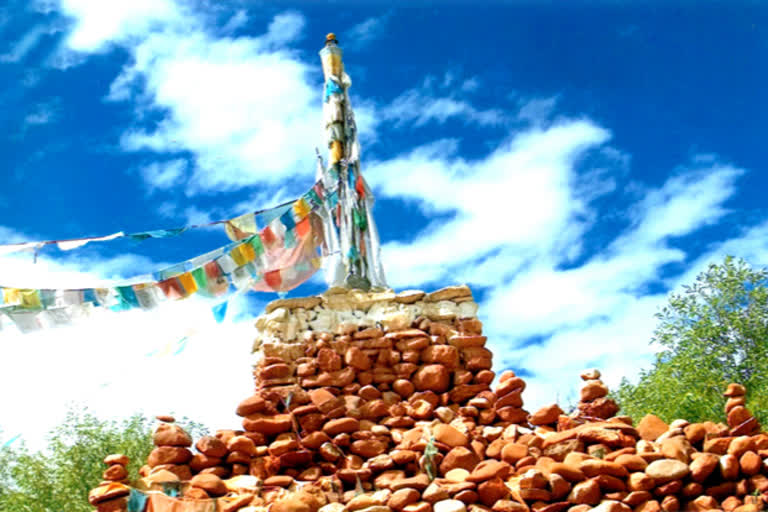New Delhi: With winter fast approaching and night temperatures near the Pangong Tso and in the areas around eastern Ladakh touching minus 20 degrees, there is a lot of worry as more than 1,00,000 Indian and Chinese soldiers are encamped near the Line of Actual Control (LAC) and in-depth areas—because for the next few months out there, unforgiving nature will be the deadliest enemy.
Not that Indians have not fought in such super altitudes before and won.
In 1841, legendary Dogra general Zorawar Singh, camping with his soldiers on the southern bank of the Pangong lake, prepared his troops for a winter war by training them on the frozen lake. His burning desire—the conquest of Tibet.
Pangong Tso is one of the face-off sites between the Indian and Chinese armies where there has been a huge mobilization by both sides. While China has occupied dominating heights on the north bank, India had the advantage on the southern bank.
But even his best preparations could not match with what the elemental forces of nature had in store for Zorawar’s army in the brutal winters of east Ladakh and Tibet.
After conquering Ladakh in 1834, flush with the success of a blitzkrieg campaign where he occupied Skardu (and present-day Gilgit-Baltistan) in 1839-40, Zorawar Singh turned his attention towards Tibet where the profitable shawl trade caught his eye.
While Indian historians have written a lot about Zorawar Singh and his exploits, it is interesting to see what Tibetan sources have to say.
According to Tibetan scholar and former finance minister of the Tibetan government WD Shakabpa Tsepon (1907-1989), Zorawar Singh’s army comprised both Sikh and Ladakhis. The fight with the Tibetan army took place at Nghari Korsum in western Tibet after which Zorawar Singh’s army advanced till Taklakhar (modern-day Taklakot in Buran province near the India-Nepal-China trijunction).
Also Read: China psy-ops unbated, thermal shelters for PLA in Ladakh latest brag
Although ill-equipped, the Tibetan army used the familiar weather to their advantage. After fighting for a few months, they manage to force out Zorawar Singh and his men from Taklakot.
And that was the time the Tibetans were waiting for—the arrival of winter.
The Tibetans has cornered Zorawar and his men as they could not turn back to Jammu as the mountain passes had closed due to heavy snow. Snowfall added to the woes as the half-frozen Sikhs fighting in unfamiliar weather conditions and terrain fell to the Tibetans. The slain General Zorawar Singh was laid to rest in a stone-marked grave a few km away from Taklakot.
According to Tsepon, the Tibetans admitted that they owed their victory to the heavy snow.
At a 15,000 feet high battlefield, although ill-equipped weapons-wise (Zorawar’s men has guns while the Tibetans fought with swords, bows and spears), the Tibetans wore and covered themselves with thick sheepskin.
Also Read: For China, Ladakh may be ruse, Arunachal the real muse
Legendary archaeologist Sir Alexander Cunningham, who was then posted in Garhwal, says many Indian soldiers lost the use of their fingers and toes and all were more or less frost-bitten.
The only fuel that could be bought was the Tibetan ‘furze’ (a shrub) which yields much more smoke than fire. Many of the soldiers from the Indian army burnt the wooden stocks of their muskets just for a little bit of temporary warmth.
Cunningham writes that on the very last day of the fight on December 12, 1841, not even half of the men could use their arms.
There are theories that Zorawar Singh may have possibly escaped his terrible fate had he moved further east to the valley of the Yarlung Tsangpo (Brahmaputra river in India) where it was a little more warmer and the terrain much friendly. But history has been consistent in its lessons. Mother Nature always has the last word.
Also Read: September takes deadly toll on Indian Army, 6 colonels die



